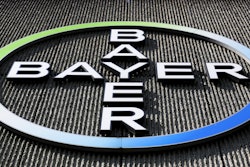Sometimes the best discoveries are made without trying. Here are six times chemistry saved the day on accident.
Teflon
The story: There’s a myth out there that non-stick coatings were a byproduct of NASA’s work in space. In reality, Teflon was accidentally whipped up by Roy Plunkett, a chemist at DuPont, who was trying to invent a new chlorofluorocarbon refrigerant in 1938.
The game-changing discovery happened after Plunkett decided he wanted to combine tetrafluoroethylene gas with hydrochloric acid. Only problem? The gas needed to be cooled so it wouldn’t explode in a lab. So, Plunkett left it pressurized in canisters in dry ice overnight. Surprisingly, when he returned the next day, the gas was gone — but the canisters weighed the same. After cutting the canisters open, Plunkett discovered that the gas had solidified, leaving behind the slippery polymer coating that changed cooking forever.
Superglue
The story: When a researcher at Eastman Kodak named Harry Coover first created superglue, the material frustrated him. It was during WWII, and Coover was working with cyanoacrylates to make clear, plastic gunsights. Instead, he just made a sticky mess.
A handful of years later, Coover encountered the same problem while experimenting with heat-resistant jet airplane canopies. This time, however, he realized he had made a unique adhesive material that didn’t need heat or pressure to work.
Plastic
The story: The goal was to find a less expensive type of shellac. But in 1907, Leo Baekeland, a Belgian chemist, stumbled upon the world’s first plastic.
The discovery happened after Baekeland mixed formaldehyde with phenol. It didn’t end up becoming a great replacement for shellac, but Baekeland found that when heat was applied and the mixture was combined with wood flour, asbestos or slate dust, he had created a material that was pliable, non-conductive and resistant to heat. Baekeland called his invention a “material of 1,000 uses” — but he still grossly underestimated the extent to which plastic would transform our everyday lives.
Vulcanized Rubber
The story: There are a few different versions of the story about how exactly Charles Goodyear made his critical breakthrough with rubber in the 1830s. But both involve the same idea: After years of trying to invent a rubber that could withstand extreme temperatures (a quest that reportedly sunk Goodyear into debt and even landed him in jail), Goodyear accidentally dropped a mixture containing sulfur, lead and rubber onto a hot stove. He quickly noticed that the material was not melting and that it retained the springy surface we now expect in tires.
While the natural conclusion is that he went on to launch Goodyear Tire and Rubber Co. and reap the rewards, Goodyear actually struggled with patent battles and died still in debt. Goodyear Tire was started by someone else, but named in his honor.
Saccharin
The story: In 1878, a Russian chemist named Constantin Fahlberg brought his work home with him — and discovered an unusually sweet result. Fahlberg had been experimenting with coal tar derivatives in a lab at John Hopkins University. But he apparently didn’t do a great job washing up, and as he ate his dinner that evening, he noticed that his food was surprisingly sweet. Fahlberg returned to the lab and tested all of the chemicals he had touched — eventually finding what is now often used as an artificial sweetener.
Synthetic Dye
The story: William Perkin, an 18-year-old lab assistant in London, was given the job of finding a cheaper way to make an antimalarial drug in 1864. The young scientist didn’t succeed, but he did notice that one of his experiments with benzene and aniline had left behind a dark purple clump — the world’s first synthetic dye. Up until this point, only natural materials such as minerals and plants were used to make dye. But Perkins’ discovery quickly helped spur the synthetic dye industry and a world of new colors.






















